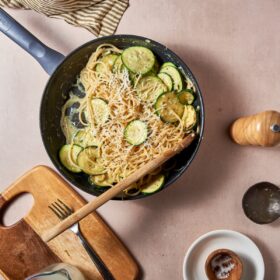This incredibly delicious Vegetarian Carbonara recipe is the perfect twist on an Italian classic for those seeking a meat-free option that doesn’t compromise on taste! Made with just 8 simple ingredients including perfectly cooked spaghetti, rich egg yolks, Romano cheese, and fresh zucchini, this mouthwatering dish comes together in just 20 minutes!
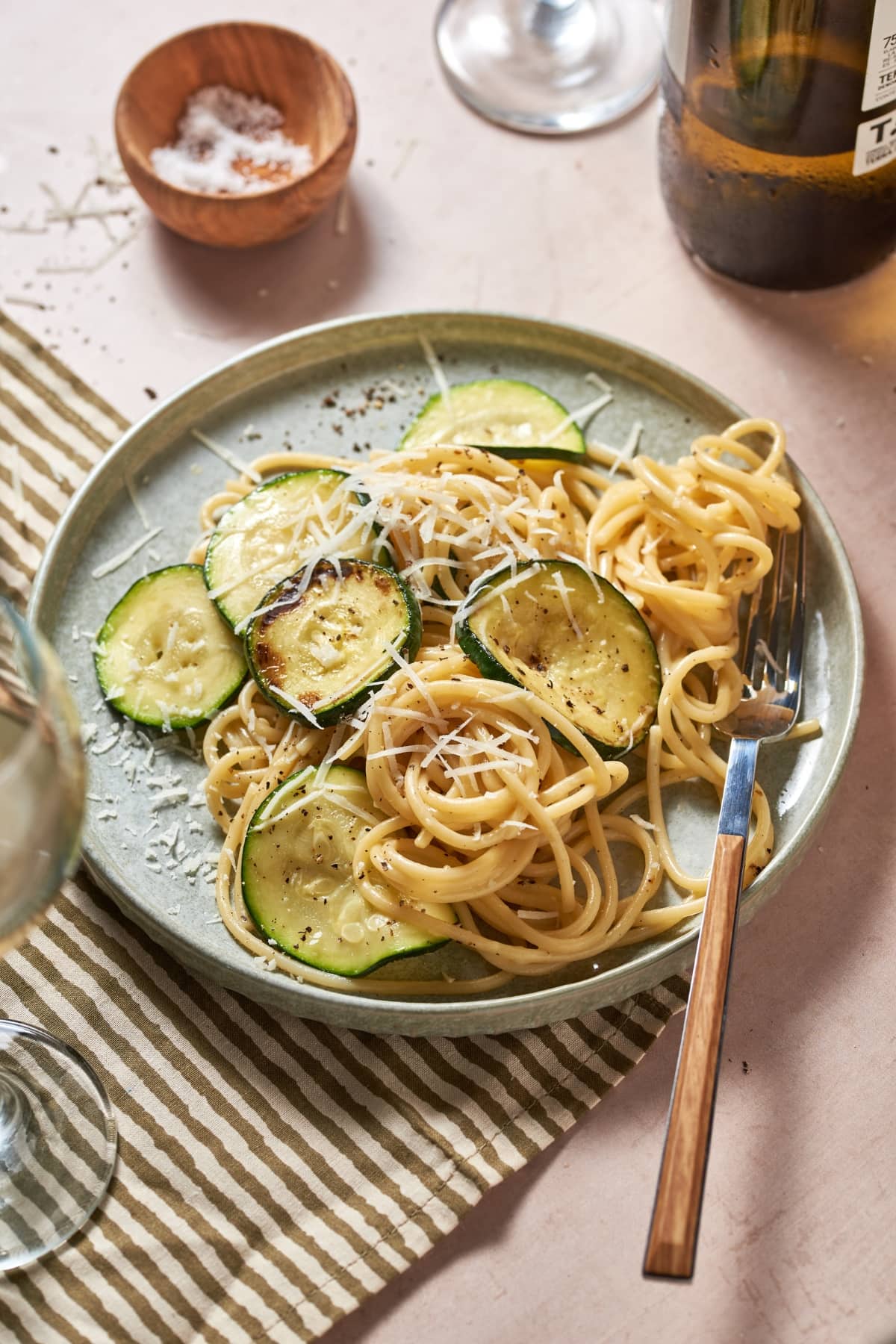
When it comes to Italian comfort food, carbonara reigns supreme with its creamy and savory goodness! Traditionally made with guanciale or bacon, egg yolks, Pecorino Romano cheese, and black pepper, pasta carbonara is sooo good and a true indulgence!
However, if you follow a vegetarian diet or simply prefer a meatless option, this vegetarian carbonara recipe is an unbelievably tasty twist that still captures the essence of the original dish.
In this vegetarian version, the recipe remains faithful to its rich and creamy roots. However, the guanciale is replaced with fresh zucchini, which complements the sauce and adds a bit of crunch. As a result, the dish not only preserves its distinctive flavor but also gains an additional layer of texture.
This vegetarian carbonara truly showcases the versatility of Italian cuisine and proves that vegetarian recipes can be just as satisfying. Each bite of this pasta dish is rich, creamy, and absolutely delicious!
One notable difference between my vegetarian carbonara recipe and others that you’ll find is the absence of heavy cream. Many people mistakenly associate creamy pasta dishes with bacon as classic carbonara, but the traditional preparation does not call for cream.
Instead, the velvety texture of the sauce comes from a combination of egg yolks, cheese, and starchy pasta water. Together the mixture creates a creamy consistency that easily clings to the strands of spaghetti.
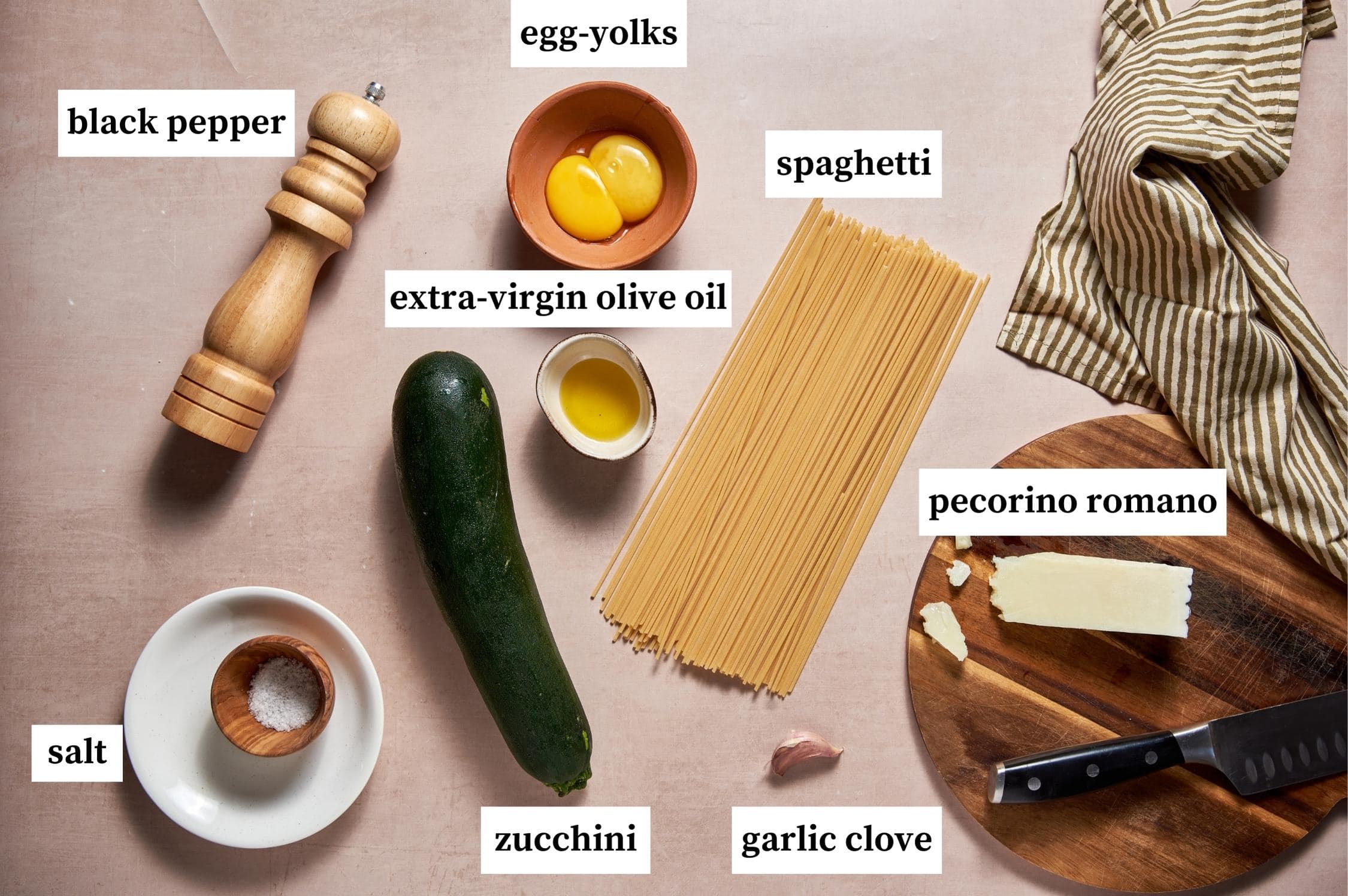
Begin by adding 1 teaspoon of olive oil to a large sauté pan followed by the sliced zucchini and garlic clove photo 1-2.
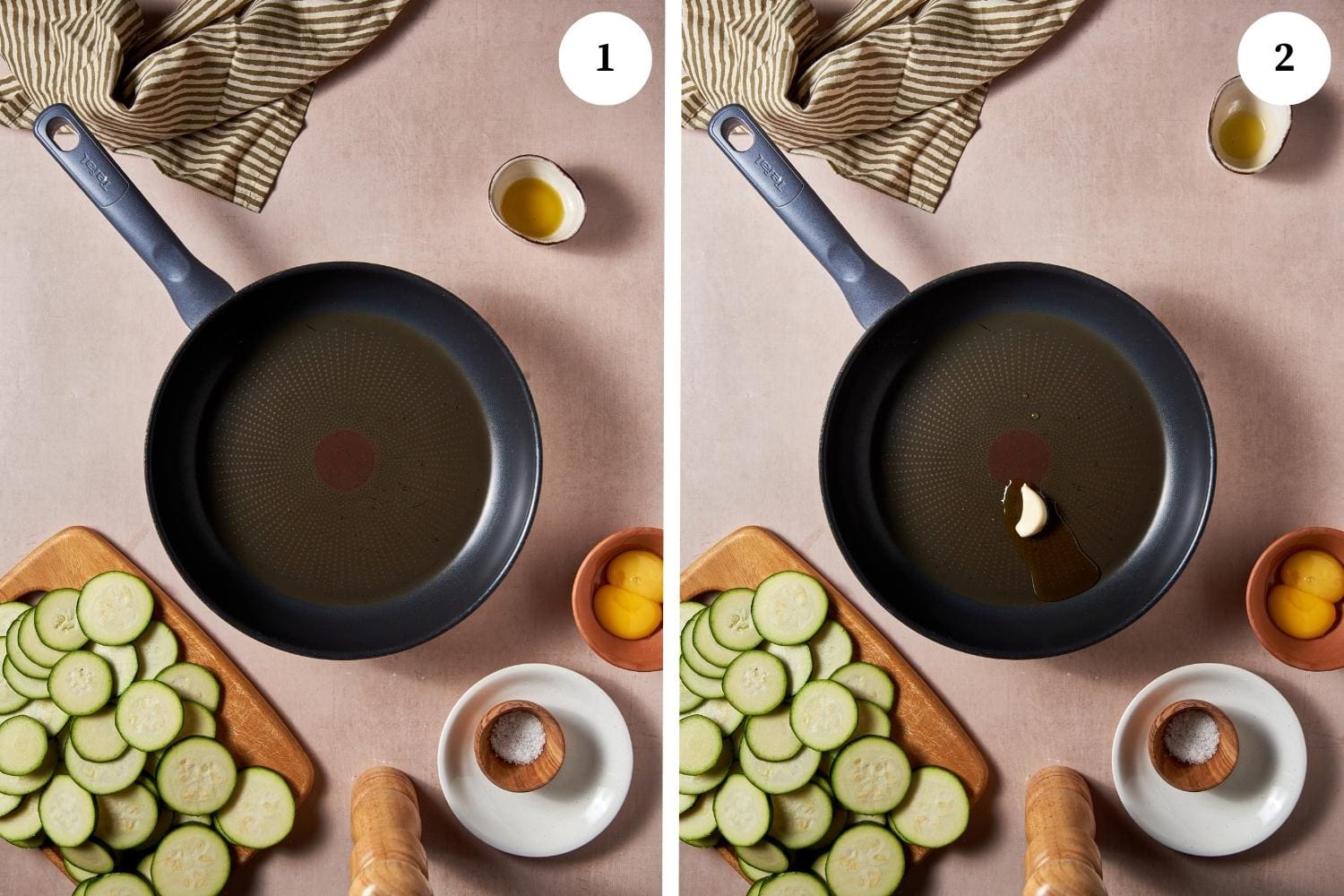
Next, place the pan over medium heat and sauté the zucchini for approximately 3 minutes or until it becomes slightly soft yet retains its crunch photo 3-4.
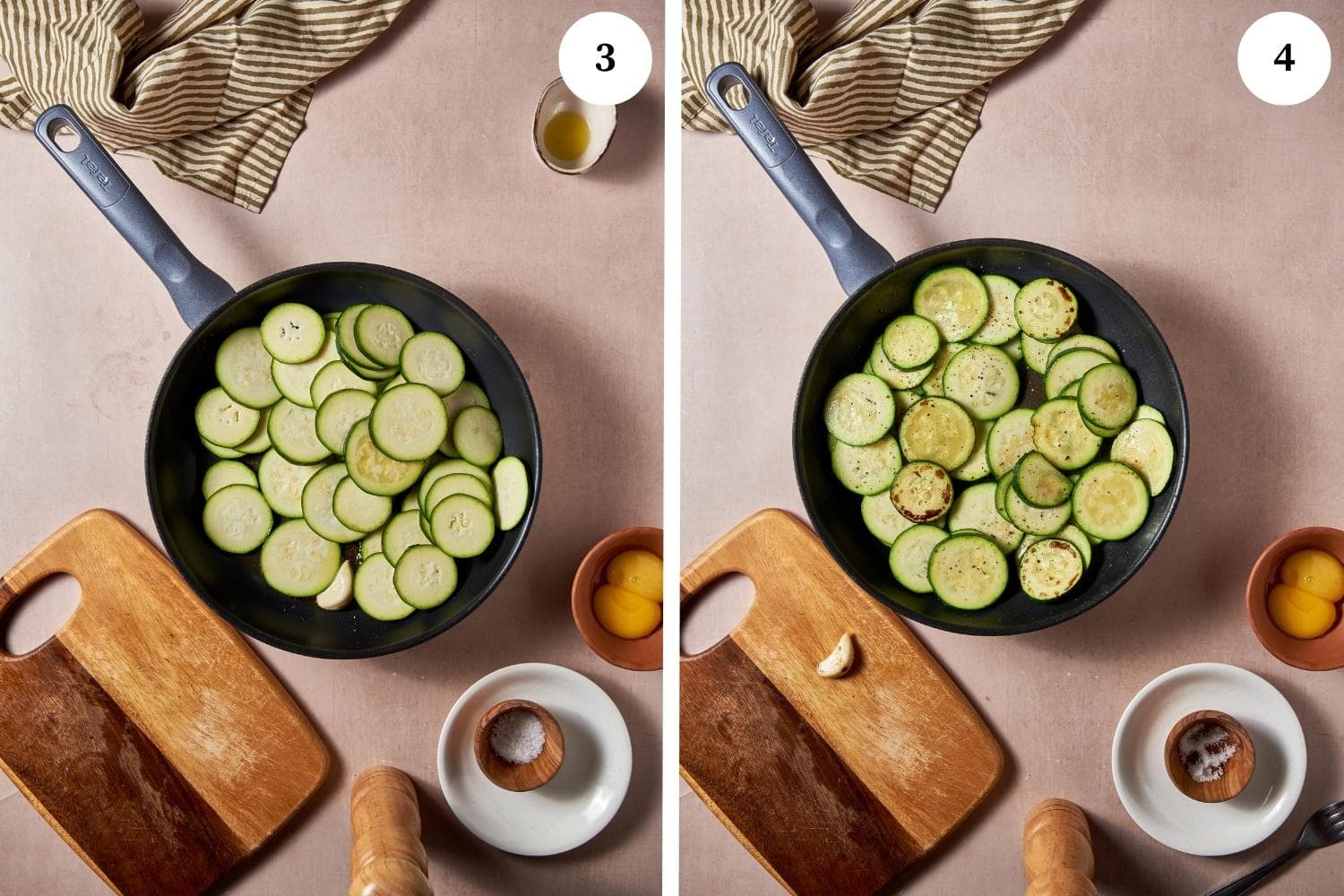
Then remove the garlic clove, season the fried zucchini with a pinch of salt and pepper, and set the pan aside for a later step.
Bring a large pot of water with a generous amount of salt to a boil. Then add the pasta to the boiling water and cook it according to the package directions or just until it reaches al dente.
When the spaghetti is done, reserve 1 cup of your pasta cooking water and then drain the noodles in a colander photo 5-6.
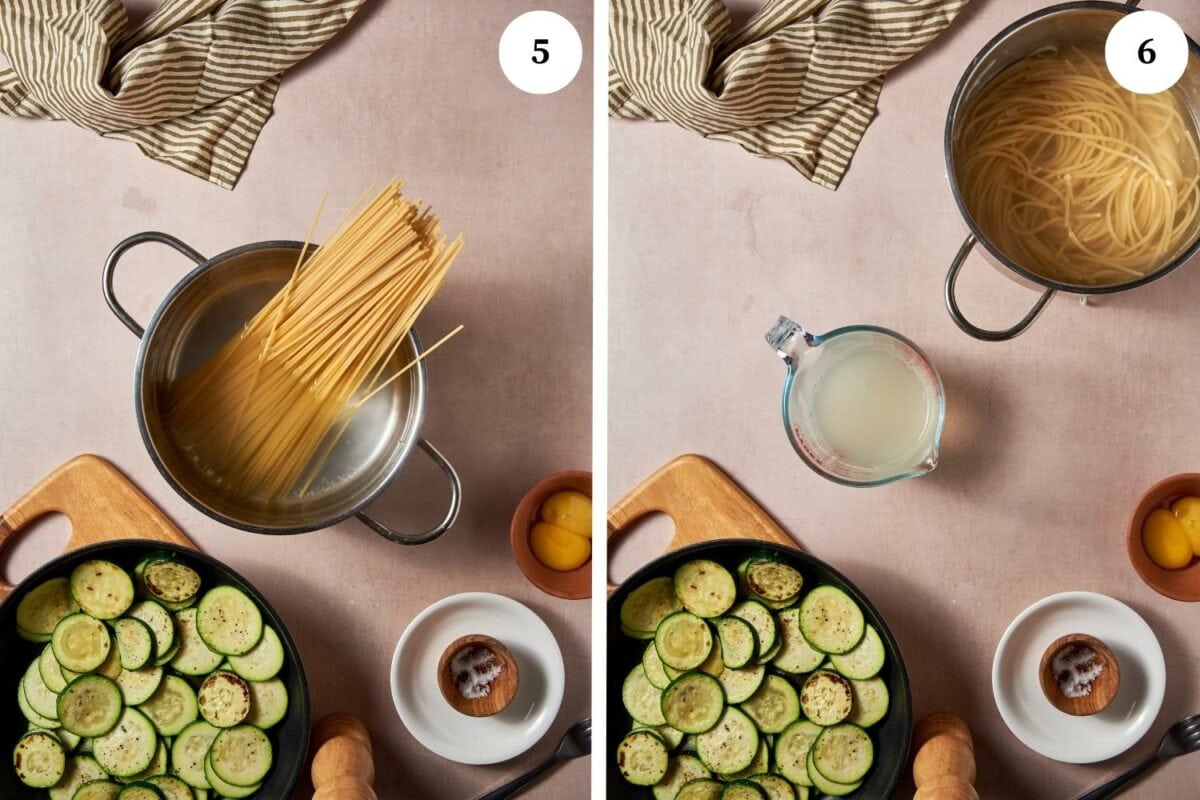
First, reserve 1 tablespoon of the grated cheese photo 7-8.
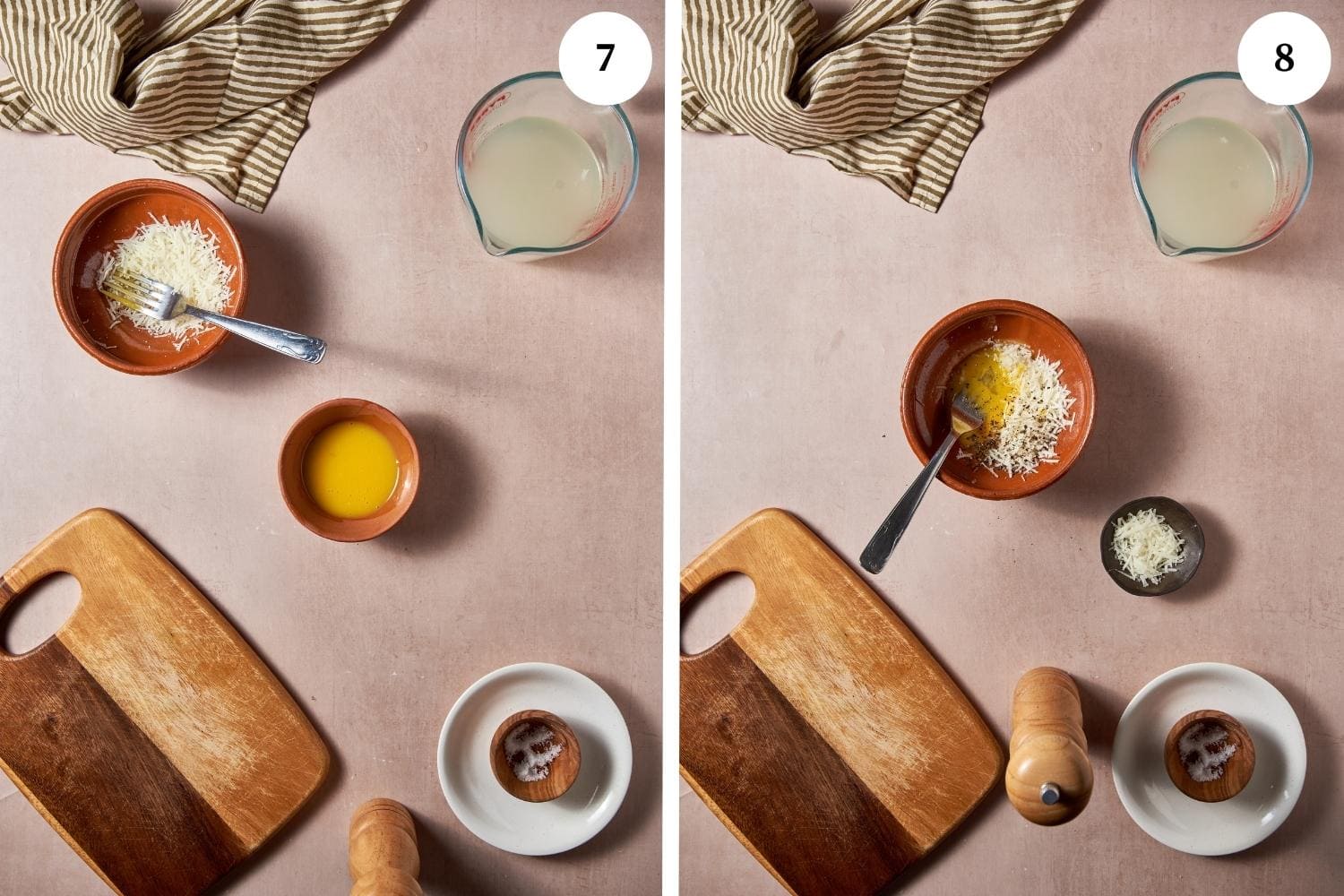
Then whisk the egg yolks, the rest of the grated cheese, and a good amount of black pepper together in a small bowl. Next, whisk 1 tablespoon of pasta water into the egg mixture until smooth photo 9-10.
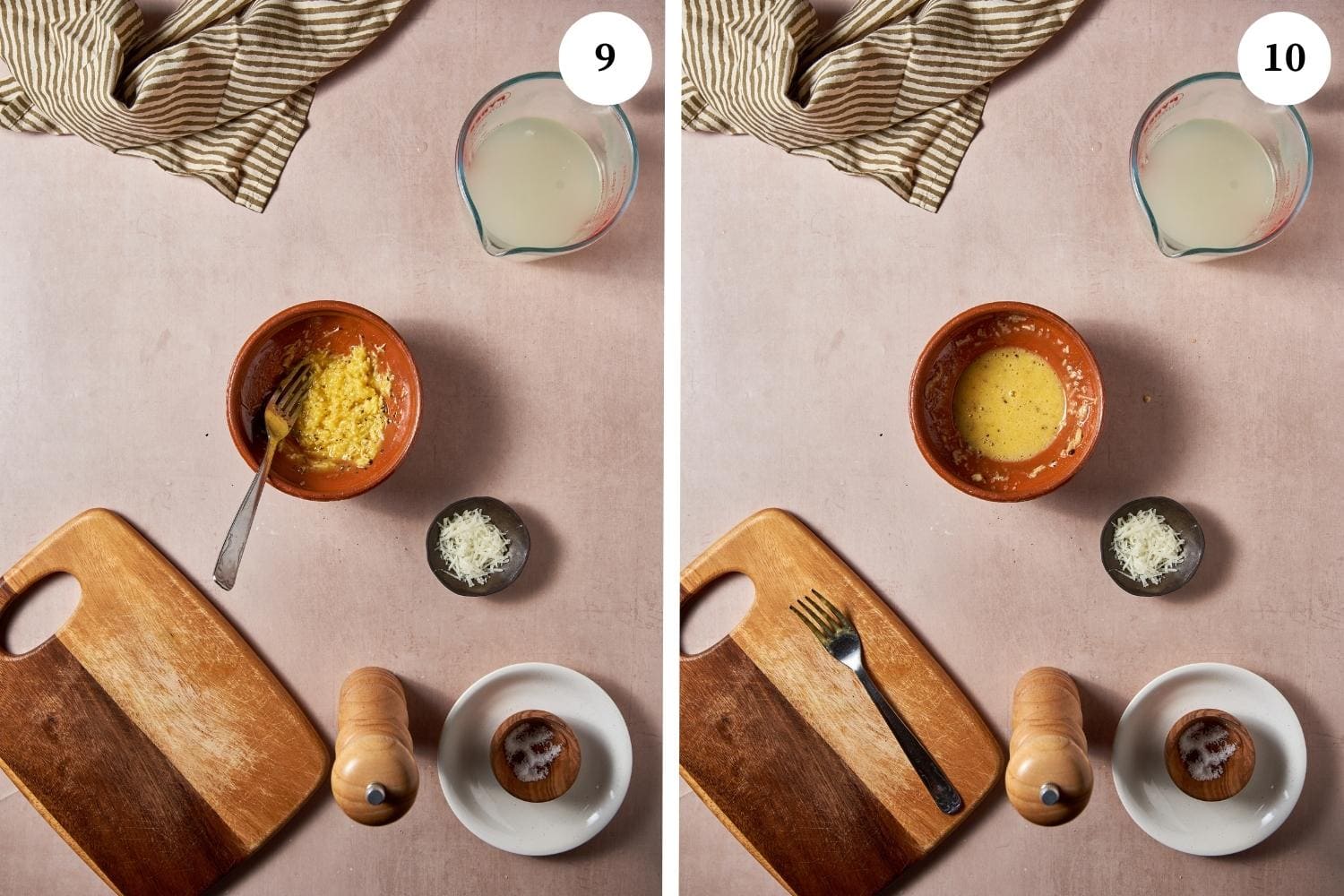
Once the pasta is done cooking, add the noodles to the large saute pan with cooked zucchini. Then add 2 to 3 tablespoons of the pasta cooking water and saute the ingredients together over high heat for just 1 minute photo 11-12.
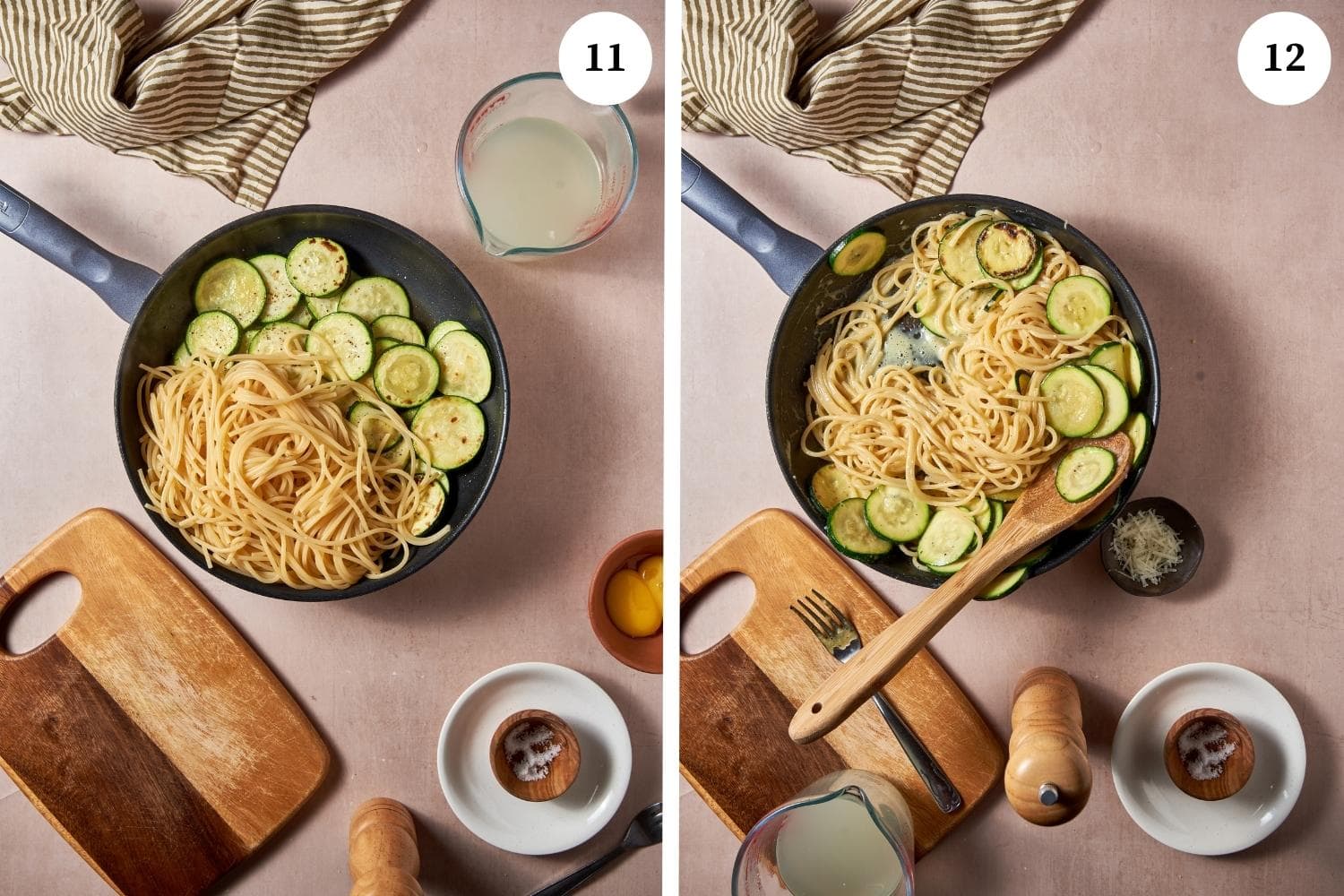
Before you start, turn off the heat and remove the frying pan from the stove. Then slowly begin pouring the egg mixture over the spaghetti while stirring constantly for about 30 seconds. Next, stir in the remaining 1 tablespoon of grated cheese and 1 to 2 more tablespoons of pasta water to create a smooth and creamy consistency photo 13-14.
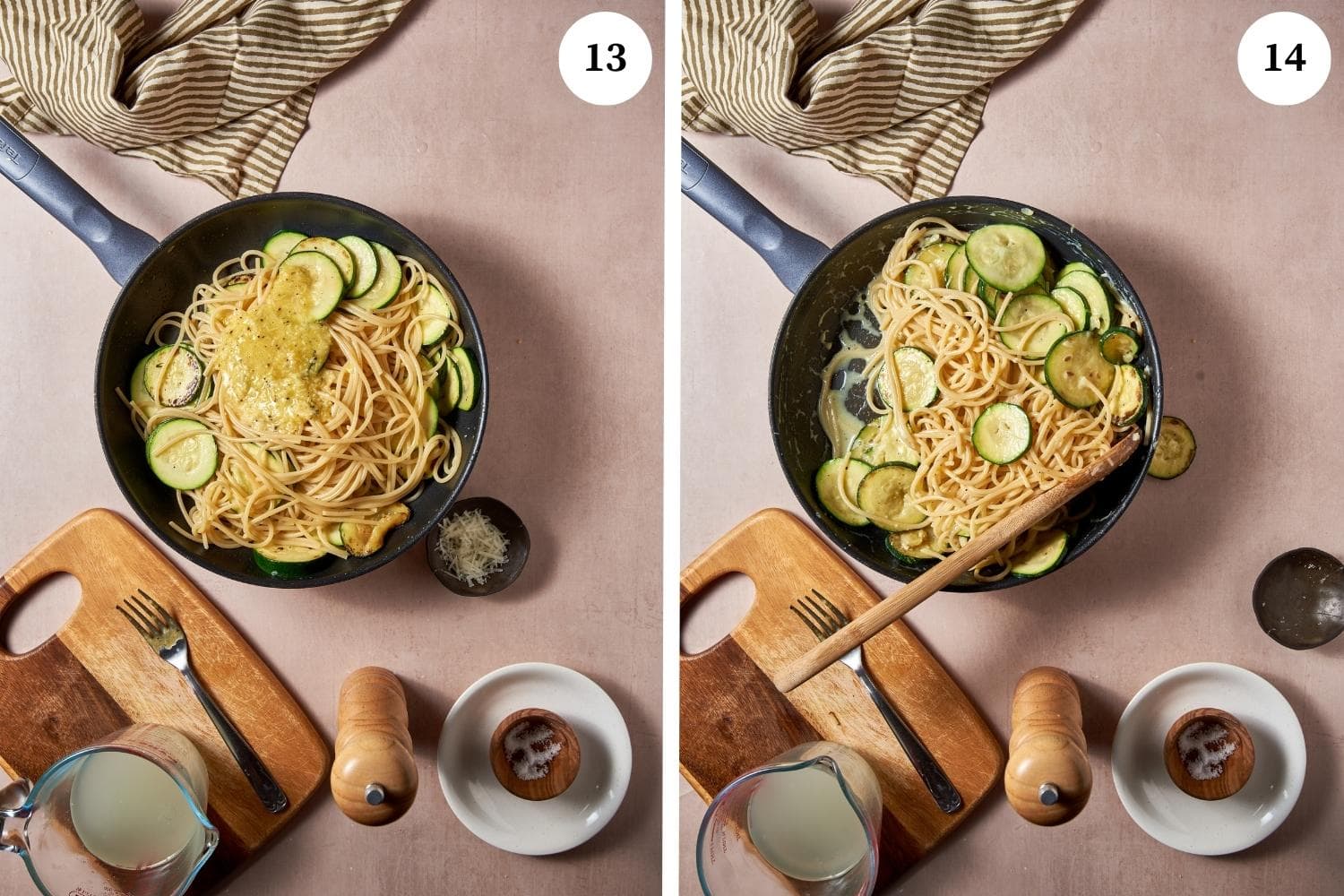
To finish your creamy vegetarian carbonara dish, give it a final toss to make sure all the noodles are fully coated in the carbonara cream. Then serve immediately on individual plates or family style.
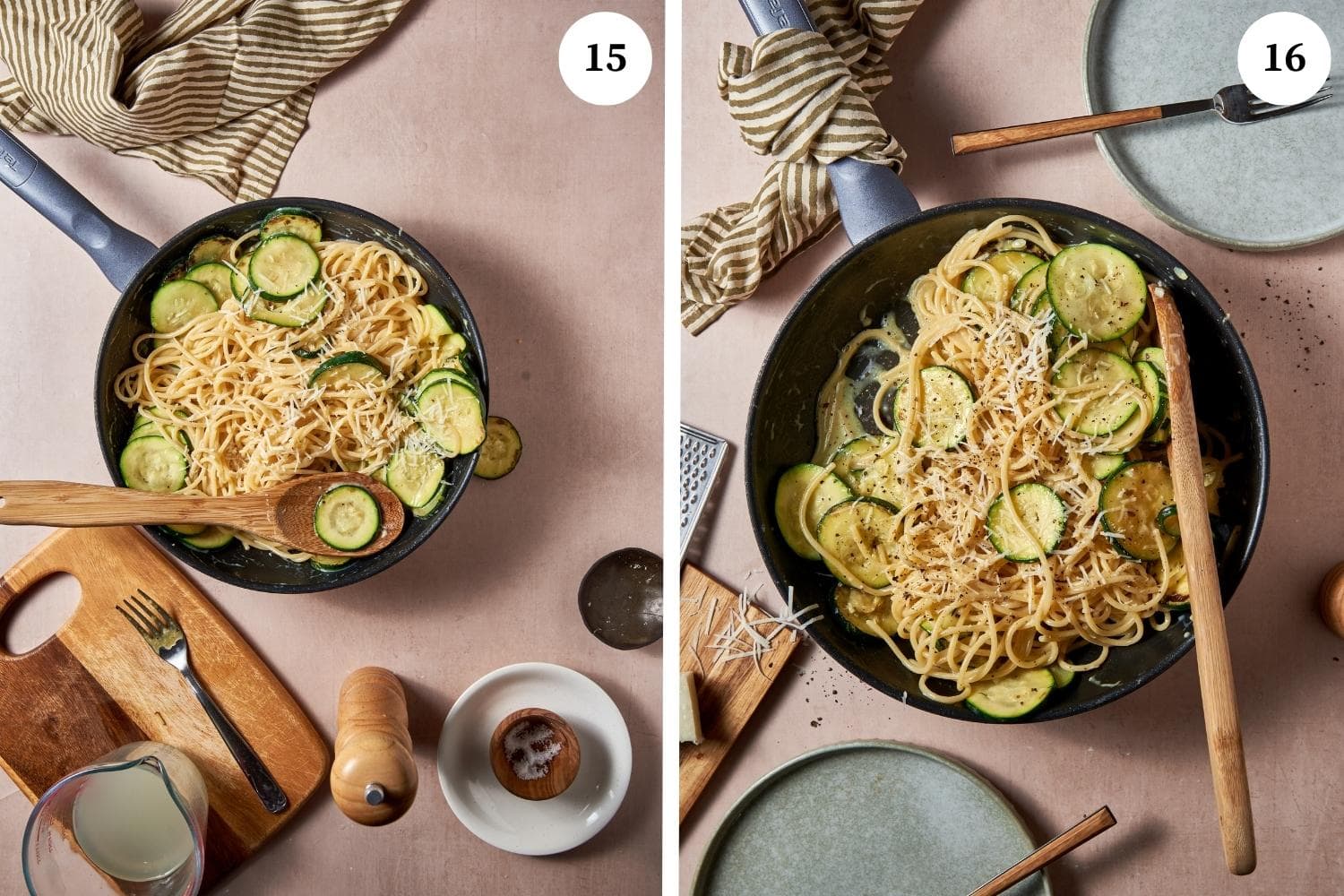
For an added touch, you can garnish the pasta with a sprinkle of freshly grated Pecorino Romano cheese and a dash more of ground black pepper photo 15-16.
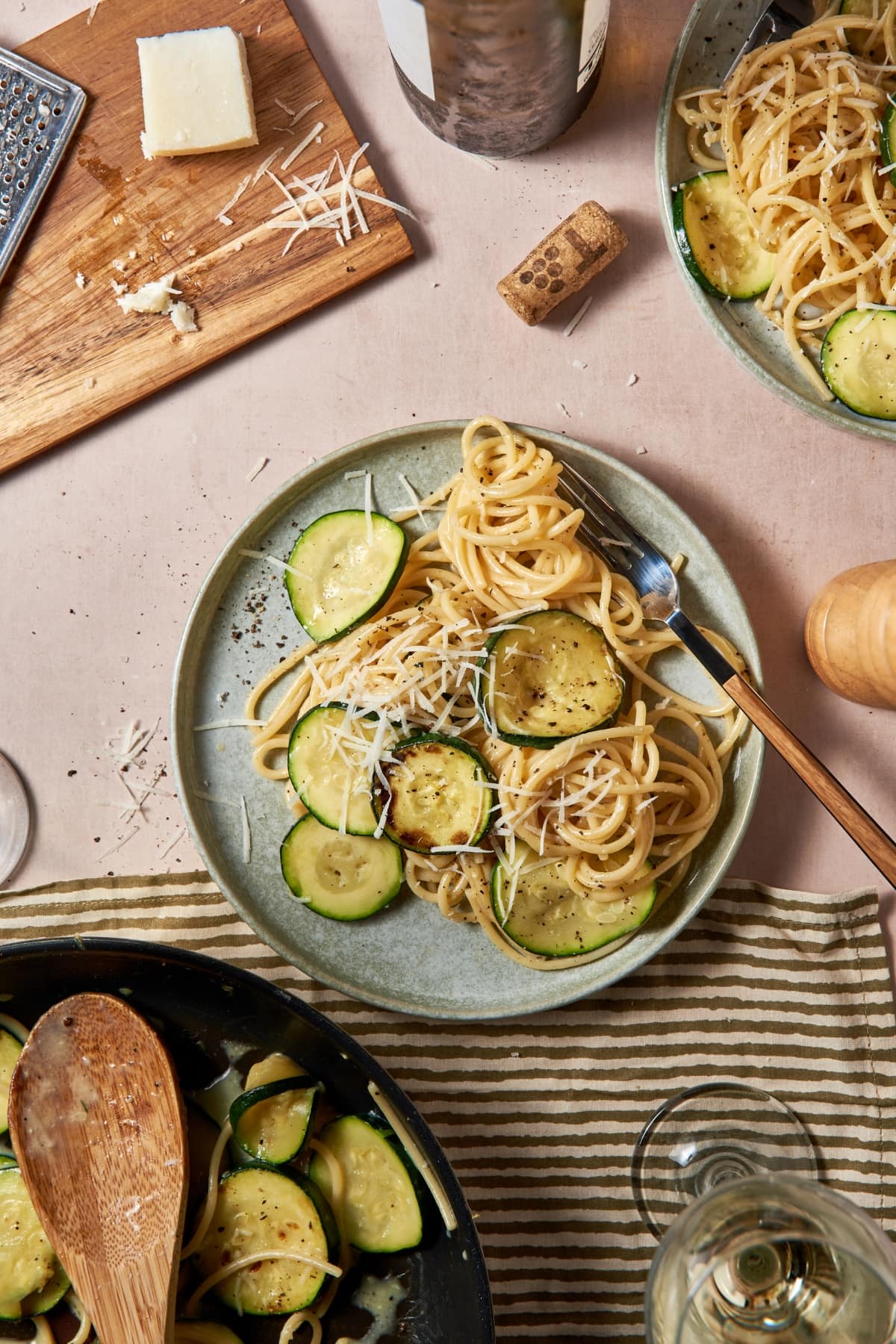
Here are some other vegetarian pasta recipes to try it out:
This tasty vegetarian carbonara is a wonderful canvas for culinary creativity! My recipe is just a starting point. You can pretty much add anything you like to this vegetarian dish!
The possibilities are truly endless. In addition to zucchini, both mushrooms, and asparagus are fantastic options. Mushrooms add a lovely meaty flavor. You could even top the finished dish with some roasted tomatoes or stir in some peas or baby spinach at the very end.
If you don’t like the idea of zucchini carbonara with no umami bacon or guanciale flavors, not a problem! Tempeh bacon, plant-based sausage, extra firm smoked tofu, and seitan are all good alternatives to make vegetarian carbonara. You just have to decide which one you want to try first!
It’s best to enjoy carbonara immediately, but you can store leftovers in the fridge in an airtight container for 3 to 4 days. Then to reheat the pasta, gently warm it over low heat on the stovetop or in the microwave. If needed, adding a splash of water or milk can help restore some of its creaminess.
Egg yolks are a very effective emulsifier that helps to bind the fat in the dish together with pasta water to create a smooth and creamy sauce.
In most traditional carbonara, ingredients such as cream, onions, and garlic are never used. Most importantly the absence of heavy cream allows the dish to achieve its characteristic creamy texture through the emulsification of eggs and cheese with pasta water.
You can use nutritional yeast on its own to substitute Parmesan or Pecorino cheese. You could also use a plant-based parmesan cheese without animal rennet. Keep in mind, your dish may result in a different final texture.
If your carbonara sauce lacks creaminess, it may be due to overcooking the eggs or not adding enough pasta cooking water. This is why it’s very important to remove the pan from the heat before adding the egg mixture. Additionally, you may just need to add a little more pasta water to achieve the desired right consistency.
